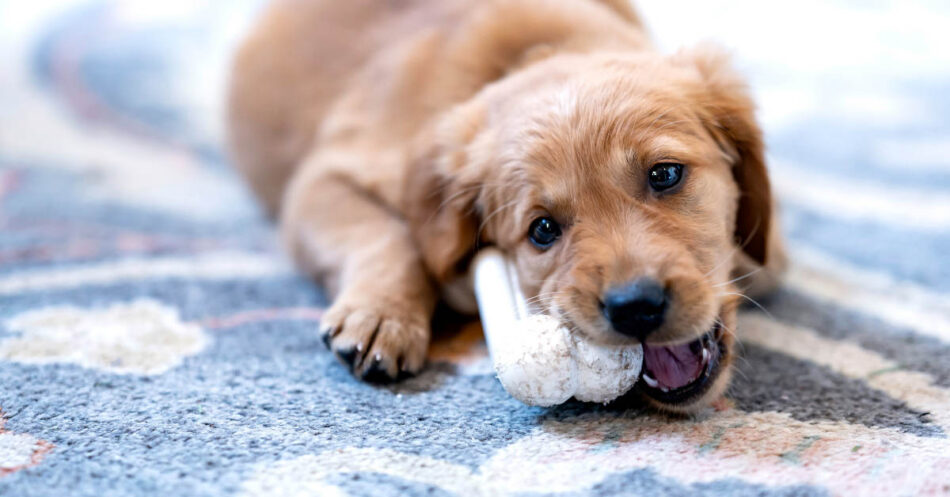
How to Stop a Puppy from Chewing on Everything
This post may include affiliate links. Please read my disclosure policy.
There is nothing quite as adorable as a puppy. However, there’s also nothing (other than a natural disaster) with the same potential to wreak havoc on your home and possessions!
If you’ve ever had the joy of raising a puppy, you know what I mean. For every soft, floppy puppy cuddle and wet, puppy-breath kiss, it seems like there’s also a chewed-up shoe, a mutilated table leg, or even a carpet that’s been peed on (to learn what to do about your dog’s urine marking, see this post). And as much as you treasure the experience of sharing your puppy’s babyhood, you may find yourself thinking (for the sake of your furniture anyway) that you’ll be a little relieved when all this destructive chewing is behind you.
Pin Me:
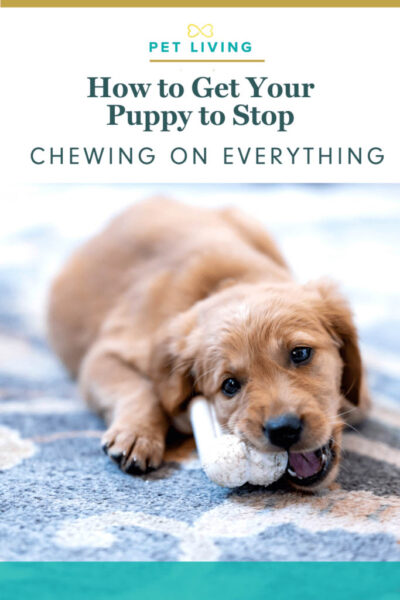
Although chewing is normal puppy behavior, there are things that you can do to minimize the damage. And with less time spent worrying about the things your puppy might destroy, you’ll be free to enjoy this precious, all-too-short stage of his life.
Why Do Puppies Chew?
Chewing is a completely natural and essential behavior for dogs of all ages, and it is especially prominent in puppies.
This common behavior plays several vital roles in a puppy’s development and well-being. Understanding why your puppy chews is the first step towards managing this behavior effectively and ensuring your pup grows into a well-adjusted adult dog.
The Importance of Chewing for Puppies
- Teething Relief: Just like human infants, puppies experience a teething phase. During this time, their baby teeth fall out to make room for adult teeth. This transition can cause noticeable discomfort and gum soreness. Chewing provides necessary counter-pressure that soothes and massages their gums, easing the teething pain.
- Exploration and Learning: Puppies are inherently curious creatures, eager to discover and understand their surroundings. They explore their world using all their senses, including their sense of taste and touch. Chewing allows them to learn about the texture and taste of various objects, helping them determine what is suitable for chewing and what is not.
- Energy Expenditure and Boredom Relief: Puppies possess a seemingly endless supply of energy. Without sufficient physical and mental stimulation, they often turn to chewing as a way to entertain themselves and use up that excess energy. Providing your puppy with appropriate and engaging outlets for this energy is crucial in preventing unwanted chewing.
In the following sections, we’ll dive deeper into strategies for managing and redirecting your puppy’s chewing habits. From selecting the right chew toys to establishing a routine that keeps your puppy engaged and happy, we’ll cover all you need to know to help curb destructive chewing and encourage healthy, appropriate chewing behaviors.
How to Stop Your Puppy’s Chewing
After throwing out your third chewed-up pair of flip-flops, you realize you need to find ways to stop puppy chewing—and soon! Here are some ways to stop puppies and dogs from doing this destructive behavior once and fur all:
Training
From the time you bring your new pup home, begin teaching him the “Leave it” command. This will make it easier to discourage him from chewing an inappropriate object and redirect him towards something else.
In addition to teaching your puppy to stop chewing on inappropriate things, it’s important to provide him with appropriate things to chew. When you catch your puppy chewing something he shouldn’t, firmly but gently tell him, “no” and offer him a chew toy you know he likes. Praise him when he begins to use the new toy. This will help him to learn what’s OK for him to chew.
For more puppy training tips, check out my interview with my good friend, Greg Kleva, from BarkBusters:
Don’t Leave Him Unsupervised
Naturally, you’ll need to supervise your puppy at all times to keep them out of trouble. But there will be times when you’re not home or when you’re too busy to keep a close eye on your puppy. Giving him the run of the house at these times is just asking for disaster.
Crating your puppy is a great way to keep him safe and out of trouble when you can’t supervise him. Dogs are den animals, so spending time in a crate isn’t a punishment. It’s an opportunity for them to enjoy some downtime, take a nap, and stay safe while you’re gone.
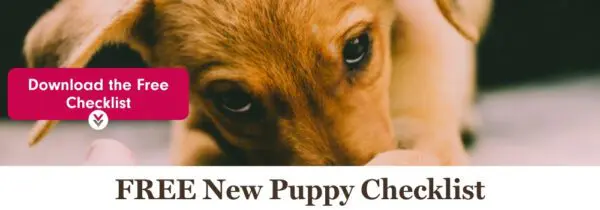
You can make your puppy’s crate inviting and homey by giving him a comfy crate pad to snuggle into while he’s napping.
You don’t want to leave your puppy in his crate for more than a few hours at a time. You should also make sure to walk him immediately before and after crating him so he has a chance to burn off some energy and take a potty break.
Keep Him Busy
Puppies have LOTS of energy, and if you don’t provide them with opportunities to work it off, they will take matters into their own paws (or teeth).
Playing with your puppy and taking him for walks are great ways for the two of you to form a strong bond, and they’ll help to keep him out of trouble too. A tired puppy is a “good” puppy.
Your puppy should have 2-3 walks or play sessions every day. If there are several human members of your family, sharing playtime duties will give everyone a chance for some quality time with your puppy. Your puppy will get plenty of exercise without totally wearing everyone else out.
One of my favorite interactive toys is the Chuckit! Ball Launcher. It’s one of the best ways to make sure that your puppy’s stamina for chasing a ball doesn’t outlast your arm.
It’s also a good idea to walk or play with your puppy at about the same time every day. Dogs (even the really young ones) appreciate predictability. Try to establish a routine so that everything in your puppy’s life—waking up, eating, potty time, playing, and rest—follows a fairly predictable schedule. This will help keep him out of trouble.
Get Your Pup Chew Toys
The appropriate chew toys for puppies are usually smaller and softer than those designed for older dogs. It’s important to avoid hard bones, as these can damage delicate puppy teeth and prevent his adult teeth from growing properly.
Never give a puppy (or any dog, for that matter) a toy that has parts that could easily be chewed off and swallowed. No matter what toys you “chews” for your pup, make sure that you inspect them regularly for loose parts or threads that could be swallowed and replace them before they become a choking hazard. Be sure that someone is always around to supervise your puppy chewing on these toys.
Kong Puppy Binky Toy. Kong makes a full line of puppy-sized toys, but the adorable binky shape makes this one of my personal faves! These chew toys also dispense treats, so they’ll not only soothe your puppy’s teeth and gums, but they’ll keep his little doggy brain busy too.
Chicken Flavored Puppy Teething Ring.
This toy’s chicken flavor gives it serious puppy appeal. And that’s good news for your shoes and furniture!
I give these rings to my puppy, Tulip, and they not only soothe her teeth and gums but also keep her busy for a good period of time. For extra relief, try throwing it in the freezer for a few minutes before your pup begins chewing.
Balls.
A traditional game of fetch will keep your pup active without totally wearing you out. My favorite puppy fetch toys are these Kong Squeakair Tennis Balls and this Gnawsome squeaking teething ball.
The teething ball feels good on your puppy’s teeth and cleans their teeth and gums as well.
Stuffed Animals.
Every puppy needs a buddy, even if it’s stuffed! When choosing stuffed toys for your puppy, it’s crucial to pick ones that are safe and durable. My two favorites are this organic cotton bunny rabbit and this Kong stuffed teddy bear. The bunny makes a perfect bedtime companion with its soft fabric, ideal for snuggling.
However, it’s important to ensure that any stuffed animal you choose does not have small parts like buttons or plastic eyes. These can be easily chewed off and swallowed, posing a serious risk of choking or creating a foreign body obstruction in your puppy’s digestive tract. The Kong bear is ideal because it’s designed specifically for dogs, featuring an internal rope that holds up to vigorous chewing and lacks any small, detachable parts.
Always inspect your puppy’s toys regularly for signs of wear and tear, and replace them before any small parts become loose. This proactive approach helps to keep your puppy safe from potential hazards while they enjoy their playful activities.
Chilled carrots. A carrot will give your puppy something cold to soothe his gums, and it’s a nutritious treat too. Since carrots are high in fiber, limit your pup to no more than one a day to avoid upsetting his tummy. I’ve seen a single carrot piece keep a puppy entertained for twenty minutes! A big bonus for busy puppy parents.
Puppy-Proof Your Home
Another way to curb your pup’s destructive chewing is to puppy-proof your home. By turning your home into a pup-friendly environment, you can stop your dog from chewing anything that can harm him and keep him safe. But remember, while puppy-proofing keeps your belongings safe, training your new dog to only chew on toys and chews provided to them is key to raising a dog who’ll know what is and what is not acceptable to chew on. So if you catch your dog chewing on something inappropriate, promptly offer a chew toy instead. When your dog switches to the toy, make sure to praise him.
Start by identifying items at puppy level that might be tempting for a little mouth—think shoes, kids’ toys, or loose cords. Next, use barriers like baby gates or playpens to section off areas that haven’t been puppy-proofed. Regularly inspect these areas for stray objects; even an innocent-looking item can become a chew toy in the eyes of a curious pup.
Puppy proofing is an ongoing process, so always be on the lookout for potential chew hazards, and make adjustments as your puppy grows and explores.
Chewing Deterrents
Sprays like this one have a taste that dogs don’t like, so it’s a great way to discourage a teething puppy from chewing on table legs, door jams, or other objects that you want to remain bite-free. Before you spray anything on fabric, however, it’s a good idea to test a small spot to make sure it doesn’t leave a mark.
The Final Woof
The puppy months will be over before you know it, and as exhausting as this time is, when it’s behind you, you’ll most likely look back on it with fond memories. If you watch your puppy carefully and provide him with plenty of appropriate outlets for his chewing needs, you’ll probably find that most of those memories are not in the form of little teeth marks in your furniture!









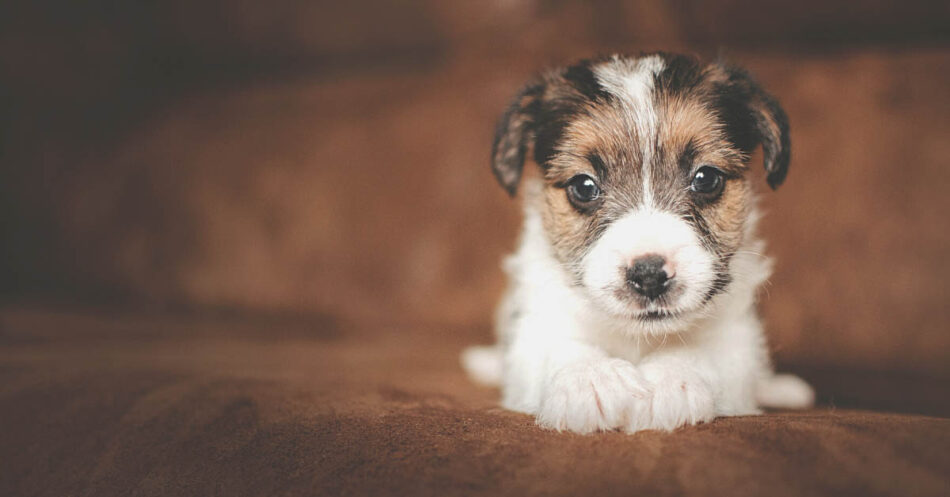
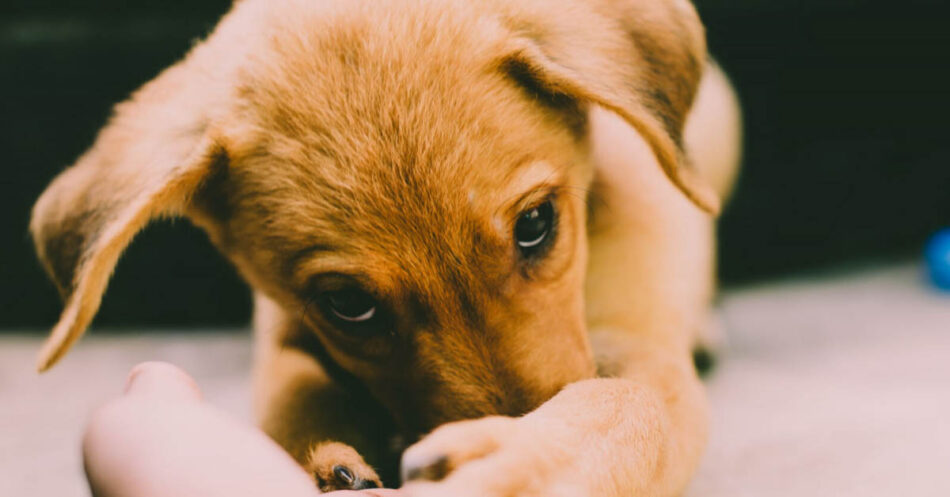
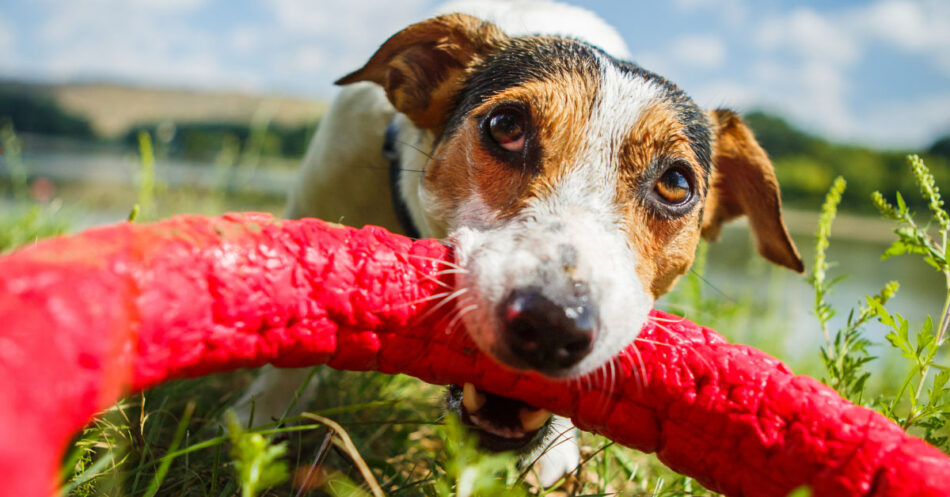
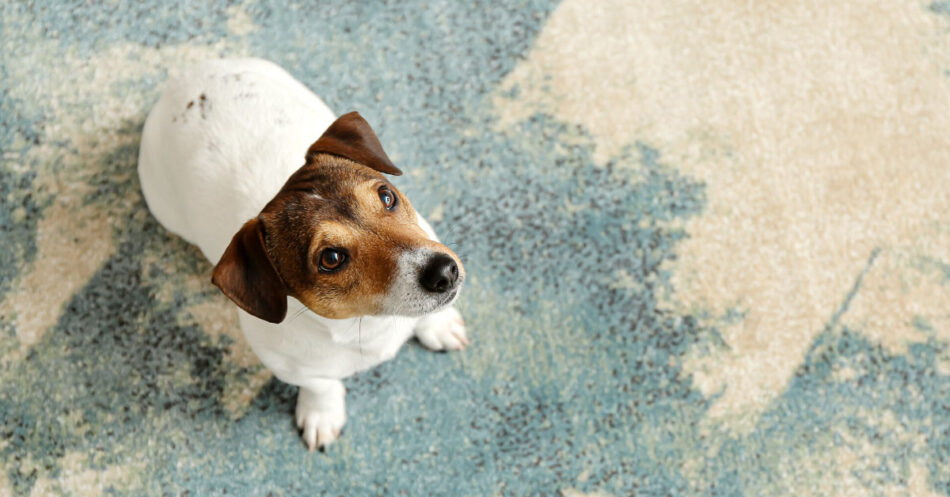
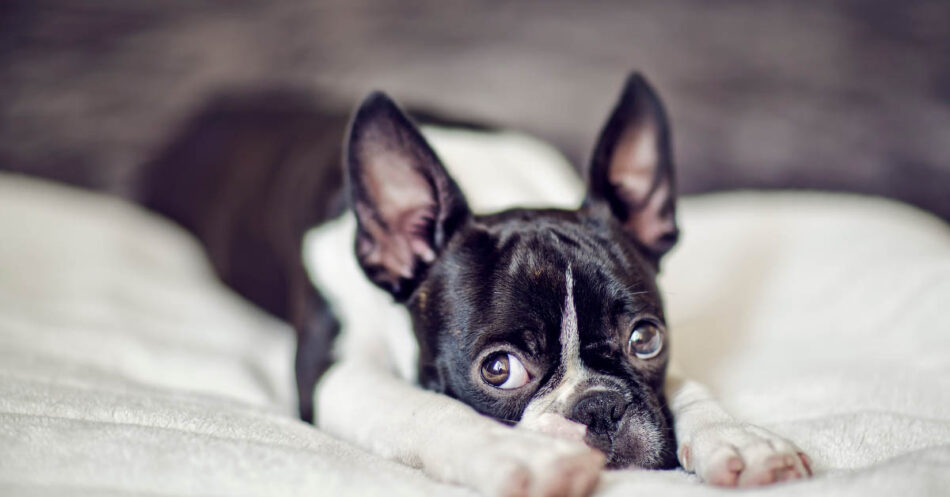

I’m literally at my wits end with my dog …
We go though cover after cover in her cage is there anything I can wash my pets blanket in that will stop her ripping it up the minute new covers are put in
I just like the helpful information you provide in your articles